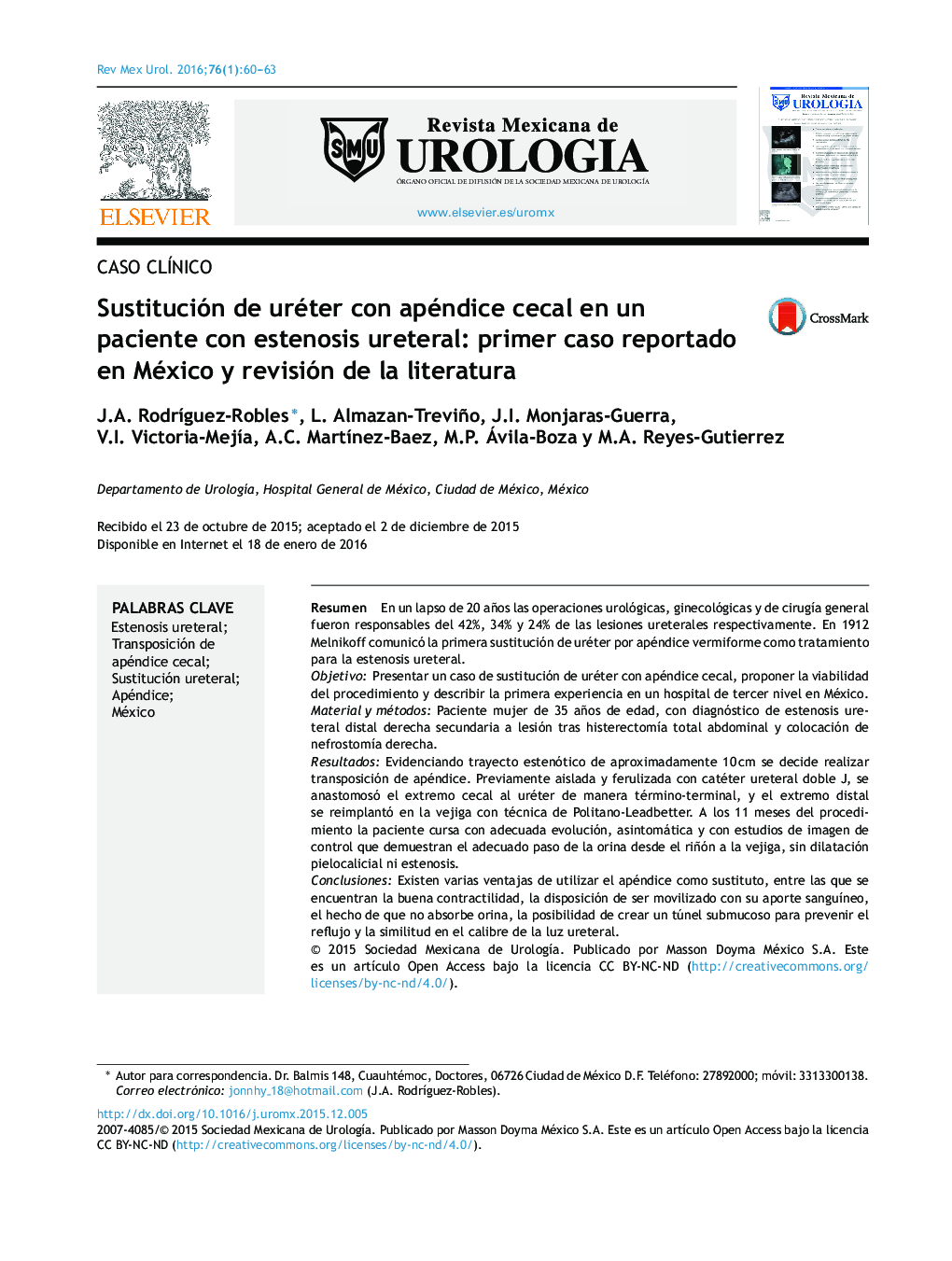| Article ID | Journal | Published Year | Pages | File Type |
|---|---|---|---|---|
| 4274369 | Revista Mexicana de Urología | 2016 | 4 Pages |
ResumenEn un lapso de 20 años las operaciones urológicas, ginecológicas y de cirugía general fueron responsables del 42%, 34% y 24% de las lesiones ureterales respectivamente. En 1912 Melnikoff comunicó la primera sustitución de uréter por apéndice vermiforme como tratamiento para la estenosis ureteral.ObjetivoPresentar un caso de sustitución de uréter con apéndice cecal, proponer la viabilidad del procedimiento y describir la primera experiencia en un hospital de tercer nivel en México.Material y métodosPaciente mujer de 35 años de edad, con diagnóstico de estenosis ureteral distal derecha secundaria a lesión tras histerectomía total abdominal y colocación de nefrostomía derecha.ResultadosEvidenciando trayecto estenótico de aproximadamente 10 cm se decide realizar transposición de apéndice. Previamente aislada y ferulizada con catéter ureteral doble J, se anastomosó el extremo cecal al uréter de manera término-terminal, y el extremo distal se reimplantó en la vejiga con técnica de Politano-Leadbetter. A los 11 meses del procedimiento la paciente cursa con adecuada evolución, asintomática y con estudios de imagen de control que demuestran el adecuado paso de la orina desde el riñón a la vejiga, sin dilatación pielocalicial ni estenosis.ConclusionesExisten varias ventajas de utilizar el apéndice como sustituto, entre las que se encuentran la buena contractilidad, la disposición de ser movilizado con su aporte sanguíneo, el hecho de que no absorbe orina, la posibilidad de crear un túnel submucoso para prevenir el reflujo y la similitud en el calibre de la luz ureteral.
Over a span of 20 years, urologic, gynecologic, and general surgery operations were responsible for 42%, 34%, and 24% of injuries, respectively. In 1912, Melnikoff described the first substitution of a ureter with the vermiform appendix as treatment for ureteral stricture.ObjectiveOur aim was to present herein a case of ureter substitution with the cecal appendix to promote the feasibility of the procedure and to describe the first experience at a tertiary care hospital in Mexico.Material and methodsA 35-year-old woman was diagnosed with right distal ureteral stricture secondary to injury after a total abdominal hysterectomy and right nephrostomy placement.ResultsGiven that the course of the stricture was approximately 10 cm, transposition of the appendix was decided upon. The cecal end of the appendix was previously isolated and splinted with a double-J ureteral stent and then anastomosed to the ureter with the end-to-end method and the distal end was reimplanted into the bladder with the Politano-Leadbetter technique. At 11 months after the procedure, the patient presented with adequate progression, was asymptomatic, and the control imaging studies showed satisfactory passage of urine from the kidney to the bladder, with no pyelocaliceal dilation or stricture.ConclusionsThere are various advantages to using the appendix as a substitute material, among which are good contractibility, availability to be moved with a blood supply, the fact that it does not absorb urine, the possibility to create a submucosal tunnel to prevent reflux, and a caliber similar to that of the ureteral lumen.
